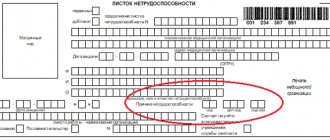In civil law there is the concept of joint and several debt collection. In the legal field, this term means joint actions to fulfill any obligations. When it comes to debt, we are talking about multiple people paying off a debt. Solidary actions appear if they are pre-established in the contract. Another option is that if the subject for which it is necessary to fulfill certain financial obligations is indivisible, the mechanism of joint actions is activated. For citizens who are not involved in jurisprudence, it is not clear what joint debt collection is.
The simplest example: a citizen injured in an accident is jointly obliged to compensate for damages under the MTPL insurance policy and the culprit of the accident. The details of the joint and several debt collection procedure can be found in this article.
What is the essence of the concept
Joint and several debt compensation is a form of civil and legal liability for one obligation that is fulfilled by several debtors. A creditor's claims are directed at multiple defendants paying a single debt. The application of the legislative norm on joint and several recovery is possible in cases where the law does not establish the fact of liability of a third party - the direct executor.
Market relations, which are accompanied by an increase in the number and variety of transactions with securities, entail a large number of disputes between participants in transactions in order to establish the responsibility of each of them. Legislative acts contain special rules that establish the responsibility of citizens for the fulfillment of obligations under contracts.
The creditor files a lawsuit to collect the debt. It makes no difference to him who will pay off the debts. The amount of payments of the persons from whom collection is made is determined by the court: from each of the joint debtors in shares or from one borrower in full. The court is guided only by the interests of the creditor.
If one of the joint debtors has the opportunity to reimburse the entire amount, then he can do this for everyone. Having paid, he himself turns into a creditor, since everyone else will have to pay him.
In what cases does CO occur?
Please note! The joint and several procedure for recovery applies to persons indicated in the insurance contract, rental of real estate, machinery or equipment, and loans for large amounts. It occurs if dubious transactions were carried out, violations of the terms of the contract were revealed, etc.
In the event of unfavorable circumstances, defendants are obliged to jointly compensate for material and moral damage. It is allowed to compensate part of the funds in pre-trial order.
Insurers
The activities of these groups of persons are regulated by a number of legislative acts. The conditions for the occurrence of obligations depend on the type of insured event. For example, if it is determined that two participants in the accident are at fault, then the damage will be compensated by two insurance companies.
Damage is compensated in equal shares if it is impossible to establish the degree of guilt of each participant.
This is also important to know:
How interest is calculated for using someone else’s money
Full partnership
Often, the memorandum of association states that after the occurrence of unfavorable circumstances, all founders bear responsibility. The guarantee obligation of each founder is personal property.
If one of the founders takes out a loan from a bank, then in case of non-payment, the remaining participants in the founding agreement are also responsible. Even if the other founders are not aware of the existence of a large loan, they are not relieved of the responsibility to pay it.
If one of the parties to the agreement dies or is declared bankrupt, the other parties to the constituent agreement are required to compensate for the debt.
Notice! It is worth noting that after the death of the debtor, obligations can be transferred to the heirs, but after entering into inheritance. Once the heirs named in the will have been identified, the responsibility for compensating the debt of the deceased falls on the shoulders of the heirs.
The law does not prohibit making claims against the notary who identified the heirs. After entering into an inheritance, the persons specified in the will are obliged to compensate the debts of the deceased. You can also recover from them legal expenses and penalties associated with delayed payments.
The debt will be collected from several persons if several people entered into the inheritance. For example, married citizens became heirs. In this case, some recovery features apply.
If the property was not acquired during marriage, then in the event of a divorce one of the spouses is not entitled to receive a share. If property is acquired during marriage, spouses will face collective liability. Bailiffs have the right to seize the accounts of both spouses and write off funds from debit or salary bank cards.
Attention! Let's consider cases of joint liability:
Free legal consultation We will answer your question in 5 minutes!
Ask a Question
Free legal consultation
We will answer your question in 5 minutes!
Ask a Question
- insurance companies that insure the liability of persons upon the occurrence of an insured event make payments to the insured person in accordance with the insurance contract;
- members of the partnership are liable for failure to fulfill obligations under contracts. The property owned by each of the participants is used as a guarantor;
- heirs who inherited not only property, but also the debt obligations of a deceased relative, assume responsibility for paying the debt;
- citizens who have accepted property for use on the basis of a testamentary refusal resolve issues of use and disposal of property along with the owners. There may be cases when an additional agreement is concluded between the parties, providing for a different procedure of responsibility;
- Spouses are jointly and severally liable for property acquired during marriage. Such circumstances occur when the property of one of the spouses is not enough to cover debt obligations.
Situations when responsibility will be shared jointly are different.
This is also important to know:
How to write an application for a court order to collect wages: detailed instructions
Let us highlight the following among them:
- insurance relations – when insurance companies compensate for damage jointly and severally in accordance with the insurance contract;
- Among the participants of general partnerships, liability is distributed jointly and severally within the framework of existing contractual obligations. Members of the partnership are liable with the property they own;
- upon receipt of an inheritance, when the heirs are obliged to fulfill the debt obligations of the testator;
- liability in solidarity extends to citizens who use housing based on a will. Thus, these citizens fulfill the same obligations as the owners of this property in matters of use of residential premises;
- Married citizens are obliged to answer jointly if the property and funds of one of the spouses are not enough to fulfill obligations and compensate for material damage.
What does joint debt collection mean for all parties to the procedure?
If there are several debtors in an obligation, then in accordance with the law we are talking about joint and several liability. The peculiarity of the procedure is that the demand for payment of debts is presented to several debtors at the same time.
All legal norms that relate to the concept of joint and several liability apply to individuals and legal entities. The creditor has the right to demand fulfillment of obligations from all debtors simultaneously, as well as from each one separately.
If the creditor has not received the full amount of the debt from one debtor, then he has the right to demand the remaining amount from other joint debtors.
Joint and several liability occurs according to the norms established by law. Such conditions may be specified in the contract. They require mandatory execution.
Collection procedure
As stated in the Civil Procedure Code of the Russian Federation, the judge is obliged to establish a procedure for collecting debt in the presence of joint liability. The court, having accepted the evidence for consideration, makes a decision and determines the procedure for repaying the debt.
The plaintiff has the right to appeal to several persons with joint liability, or to each person separately. He also has the right to contact one of the debtors.
Notice! If the plaintiff in the application indicates only one of the group of persons who are jointly and severally liable, the court has the right to extend the effect of the court decision to the remaining members who are jointly and severally liable.
If the plaintiff in the collection case is an individual who is not related to the legal organization, then the claim will be considered by the magistrate court or district court.
If the amount of the claim does not exceed 50 thousand rubles, the application is sent to the magistrate's court. If a claim exceeds the specified amount, legal proceedings should be initiated in the district court.
Conflicts related to debt collection between legal entities should be resolved through judicial arbitration. You can file a claim for debt collection within the time limits established by law.
According to Article 196 of the Civil Code of the Russian Federation, a person has the right to file a civil claim within three years from the moment the debt arose. After the specified period has expired, the court will refuse to consider the claim.
This is also important to know:
In what cases is an employee obliged to compensate the employer for damage caused to him?
However, based on a decision of a judicial authority, the statute of limitations may be extended.
Important! Let's consider cases when the plaintiff has the right to extend the statute of limitations:
- the application was submitted untimely due to serious illness;
- the statute of limitations has passed due to natural disasters or force majeure circumstances. For example, evidence was destroyed in a fire and the applicant needed time to recover;
- the applicant was untimely notified of the violation of the debt payment procedure.
In such situations, if there is appropriate evidence, the applicant applies for an extension of the statute of limitations in court. In this case, the court extends the period for the period that the applicant spent in illness or was engaged in restoring a set of documents. The extension period is at the discretion of the court.
After receiving the statement of claim, the court begins legal proceedings. In addition to the application itself, the plaintiff must provide copies of supporting documents. The originals must be presented at the court hearing.
Please note! Full package of documents for the court:
- statement of claim in several copies according to the number of participants in the process;
- a copy of the loan agreement establishing the legal relationship between the plaintiff and the defendant. The agreement and its annexes indicate the payment procedure, the amount of debt and the responsibilities of the parties;
- in case of a requirement to pay inherited debts, it is necessary to provide information about the existence of debt (account statements, promissory notes, invoices, etc.);
- receipt of payment of state duty. The amount of payment is determined by Article 333 of the Civil Code and depends on the amount of the claim.
According to the procedural features in force in judicial proceedings, the application must indicate the following data:
- The name of the judicial authority is indicated at the top right;
- Below are the details of the plaintiff: full name, residence address, contact telephone number;
- Below is the information of the defendant: full name or name of the organization, contact information, legal and actual address;
- if third parties need to be involved in the paperwork, then their names and contact details must be indicated;
- in the main part of the statement of claim it is necessary to indicate under what circumstances the debt arose, on what basis it arose (agreement, receipt and other obligations), what measures were taken to collect the debt, it is necessary to indicate the amount of the debt;
- in the reasoning part, the requirements should be stated - to recover funds in favor of the plaintiff (indicating the amount). If the application includes several responsible persons, then all of them should be indicated. You can also allocate a share for each of the defendants or indicate the amount in full;
- The date of submission of the application is indicated at the bottom of the sheet, and the personal signature of the applicant is affixed.
This is also important to know:
What does Art. 100 Code of Civil Procedure of the Russian Federation: main provisions of the article with analysis of situations
When filing an application with the court, you should prepare several copies of both the application itself and copies of supporting documents. The number of copies depends on the number of participants in the process. One copy is filed in the case, the rest are sent with a summons to the participants in the process.
Free legal consultation We will answer your question in 5 minutes!
Call: 8 800 511-39-66
Free legal consultation
We will answer your question in 5 minutes!
Ask a Question
After filing the application, the court will consider the evidence provided and formalize the legal proceedings. After collecting the necessary information, a court hearing will be scheduled. The first meeting can be either preliminary or a consideration of the case on its merits. This procedure is established at the discretion of the judge.
Based on the results of the meeting, after hearing the arguments of the parties, the court makes a decision. The decision specifies the amount to be recovered.
As a rule, the judge indicates the shares that each defendant must compensate. The amount of payment can be determined by the court based on the citizen’s solvency or distributed among the co-defendants in equal shares.
Watch the video. Vicarious liability:
Court order
Once you file a lawsuit, authorized officials must review your case and make a decision.
Based on this decision, a court order will be formed, which will be issued within 5 days. This follows from Article 126 of the Civil Procedure Code.
According to Article 128, the court sends an order to the debtor, and he can submit his objections regarding execution within 10 days.
Early withdrawal
There is such a thing as canceling a court order. This occurs if the debtor, within the time established by law, raised objections regarding the execution of the court decision.
Such a claim may be presented to the court as a claim proceeding. Within three days after the decision is made, the court must notify both parties of the cancellation of the order.
It may also happen that the borrower will return the required monetary fee even before the court makes a decision. In this case, he provides there a receipt for the repayment of the debt to the creditor.
How the law defines what it means to collect a debt jointly and severally
The Civil Code defines this as the responsibilities and procedure for complying with legislative norms when collecting debts.
Opportunities that the creditor acquires after the onset of liability:
- The creditor has the right to demand payment of the debt from all joint debtors, as well as from one of them. He has the right to make claims for payment of the debt in whole or in part.
- If one of the joint debtors does not fulfill the creditor's demands, he must demand payment of debts from other debtors.
The main feature of this kind of obligation ultimately boils down to the fact that the creditor, in an effort to obtain a loan, has the right, on the basis of an agreement, to demand repayment from several debtors, which increases his chances of guaranteed repayment of the debt. He can choose the most solvent contingent of borrowers and repay the debt in full.
Legal regulation of the issue
In cases where there are several creditors or several debtors in an obligation, each of the creditors will be able to demand the fulfillment of obligations, and each defendant is obliged to fulfill his obligations to the plaintiff, unless otherwise provided by regulations or law (Article 321 of the Civil Code of Russia).
Therefore, it would be useful for defendants in such cases to find out what it means to jointly collect a debt before the start of the trial. We are talking about joint and several obligations when the solidarity of demands or the solidarity of obligations is established by law or provided for by the relevant agreement.
The joint and several procedure for recovery is a concept that concerns the indivisibility of the subject of the obligation, which is regulated by Article 322 of the Civil Code of Russia. In the case of joint and several obligations, the creditor has the opportunity to demand repayment of the debt from one of the debtors, as well as from all debtors. In this case, the creditor will also be able to demand the entire debt or some part of it. If he has not received full satisfaction of his claims from any one joint defendant, he will be able to demand the return of the lost amount from the remaining joint defendants.
The video discusses the features of joint liability and recovery
>Collection under the joint and several procedure of the Civil Code of the Russian Federation in 2019
5/5 (2)
The procedure for fulfilling obligations is set out in Article 321 of the Civil Code of the Russian Federation. Thus, if an obligation must be fulfilled by several persons, or several creditors are involved in the case, then each person with powers or obligations is obliged to fulfill them, unless otherwise specified in the conditions of this paperwork.
In case of participation in such legal proceedings, it is necessary to have an understanding of joint and several liability. This concept is used in relation to legal proceedings in which several persons are obliged to bear responsibility within the framework of an agreement or a court decision.
Joint and several liability is a term that indicates that obligations cannot be transferred to the shoulders of one of the persons. This procedure is established by Article 322 of the Civil Code of the Russian Federation.
If a collection procedure is applied to debtors within the framework of joint liability, then the debt is recovered from all participants in equal shares. It is possible to repay the debt either in full or in part.
In this case, the amount may first be partially recovered from one of the defendants, and the rest is recovered from other persons. The plaintiff has the right to appeal to either one of the debtors or several at the same time.
Due to frequent changes in legislation, information sometimes becomes outdated faster than we can update it on the website. right now through the form (below), and one of our lawyers will call you back to provide a free consultation.
On the role of guarantors in joint and several liability
The contingent of citizens who are included in the payers along with the main borrower must include his guarantors, who confirm his solvency. If the terms of the loan stipulate the presence of a guarantor, then until the debt is finally paid, he is responsible for its repayment. The income of the guarantors is not taken into account when drawing up the contract, but when the borrower becomes insolvent, the legal norm on joint and several liability comes into force. In accordance with this, the guarantor becomes a person who is obliged to repay the loan on an equal basis with the main borrower.
In this case, the responsibility of citizens who vouched for the borrower cannot be canceled even in court.
For example, if the main borrower disappeared in an unknown direction or is simply unable to pay debts, responsibility is redirected to his guarantors, as persons who have assumed part of the responsibility for the loan by signing the agreement.
Joint and several liability under writ of execution
After the court makes a decision on the distribution of payments among joint debtors, a writ of execution is issued in the case. It indicates the total amount of debt that will be collected from everyone. If any part of the debt is collected from one of them, the total amount of the debt is reduced.
Solidary recovery from all defendants is an opportunity for a creditor to repay a loan from several debtors if one is unable to pay off its obligations.
Information about joint and several debtors, which are registered in the writ of execution, is communicated to the bailiff service. His responsibilities include direct control over the execution of the court order.
The legislative framework
The Civil Code explains what joint and several debt collection is. It arises when the generality of requirements is specified in an agreement or legally established. If joint fulfillment of the terms of the contract is required, then, according to the Civil Code, several debtors simultaneously take part in legal relations. This is beneficial to the lender, as the likelihood of repaying the debt increases.
In accordance with Part 2 of Art. 322 obligations of debtors when participating in commercial transactions remain joint and several, as do claims to several creditors. This form is established by law. Its purpose is to ensure the protection of the interests and rights of creditors, who bear greater risks when carrying out commercial activities.
All issues related to the regulation of joint and several liability are covered in Article 325 of the Civil Code. The concept itself is discussed in Chapter 22, and the obligations of the parties are spelled out in Article 322. In each case, obligations are fulfilled differently. It depends on the purpose of the loan: mortgage, cash or consumer loan. Only fulfillment of obligations in full by the borrower releases everyone else from the requirements imposed by the lender.









